Fixing: The Archive of Alan Dimmick
Moira Jeffrey
In Alan Dimmick’s photographs people make art, form bands, fall in love, tie their hair into new styles and drink beer from the bottle. They go to the beach, watch the seagulls watching them, and fall over on the sand. Children play their own mysterious, inexplicable games. Generations link hands. The tower blocks of Glasgow loom solid and implacable only to slump, horribly, like wounded bodies. Lichen grows over stone. The machair blooms in springtime. Nothing remains fixed.
The Glasgow photographer Alan Dimmick has been there for more than four decades, recording the world in quiet monochrome. A kilted wedding, a black-clad funeral, the stretch of cheap white fabric on awkward adolescent bodies on a school sports day. A photograph might claim to tell us something about a moment: a prosaic truth, or a believable fiction. But an archive reveals the bittersweet poetry of time passing. Over the years, in Dimmick’s photographs of Glasgow’s music and art scenes, the city’s physical scars and idiosyncrasies and the intimacy of life with family and friends, familiar places and faces recur. Fringes go up and down.
Teenage fleshiness melts away to expose sharp cheekbones. Babies grow up, walk, and walk away. Parents grow old. Change is unstoppable.
There are birds everywhere: beady-eyed, cocking their heads, scavenging, roosting, coolly observing. All is not as it seems. It
is a plastic bird of prey that protects a seaside ice cream booth from avian scavengers. Hanging in a tree outside a whitewashed house on a windswept Scottish coast is a white buoy, with a word painted on it in thick black letters: boy. A visitor to Glasgow’s Garden Festival clasps a hidden memento behind his back: a perfect, round, and threatening stone.
As a young teenager Alan Dimmick taught himself photography, setting up in his parents’ cupboard. At school they gave him a disused girls’ toilet in which to establish his dark room. At Glasgow College of Building and Printing he learned not art photography but chemistry, from men who had been commercial and industrial photographers. A photograph was something made not just with the eye and the shutter, but with the hand. As a student he worked wrist-deep in chemicals in a chilly Glasgow annexe. Developer. Stop bath. Fixative.
Dimmick’s work finds him frequently in the art world, documenting exhibitions and art works. At Glasgow’s Transmission Gallery, where he began recording art openings and events in 1995, he captures artists gathering to talk, look, laugh and drink. What his camera finds in Glasgow’s young artists and its galleries, as it found in the city’s music scene in the 1980s, is kinship and affection, the friction and traction of bodies in excitable proximity.
When Alan Dimmick presents his prints he shows them together in their hundreds, mounted directly on the wall, not as a series of images, but as an accretion of information. We see four decades of social history, Glasgow’s art and music scenes, the city’s changing fabric, the human figure in the landscape. We should read them not as line or narrative, but as a kind of accumulation and contingency.
What we might seek in them are the stories that haven’t been told, the histories that haven’t yet crystallised but are still in liquid motion. Fixed. Unfixed.




© Alan Dimmick 2025